This website uses cookies so that we can provide you with the best user experience possible. Cookie information is stored in your browser and performs functions such as recognising you when you return to our website and helping our team to understand which sections of the website you find most interesting and useful.
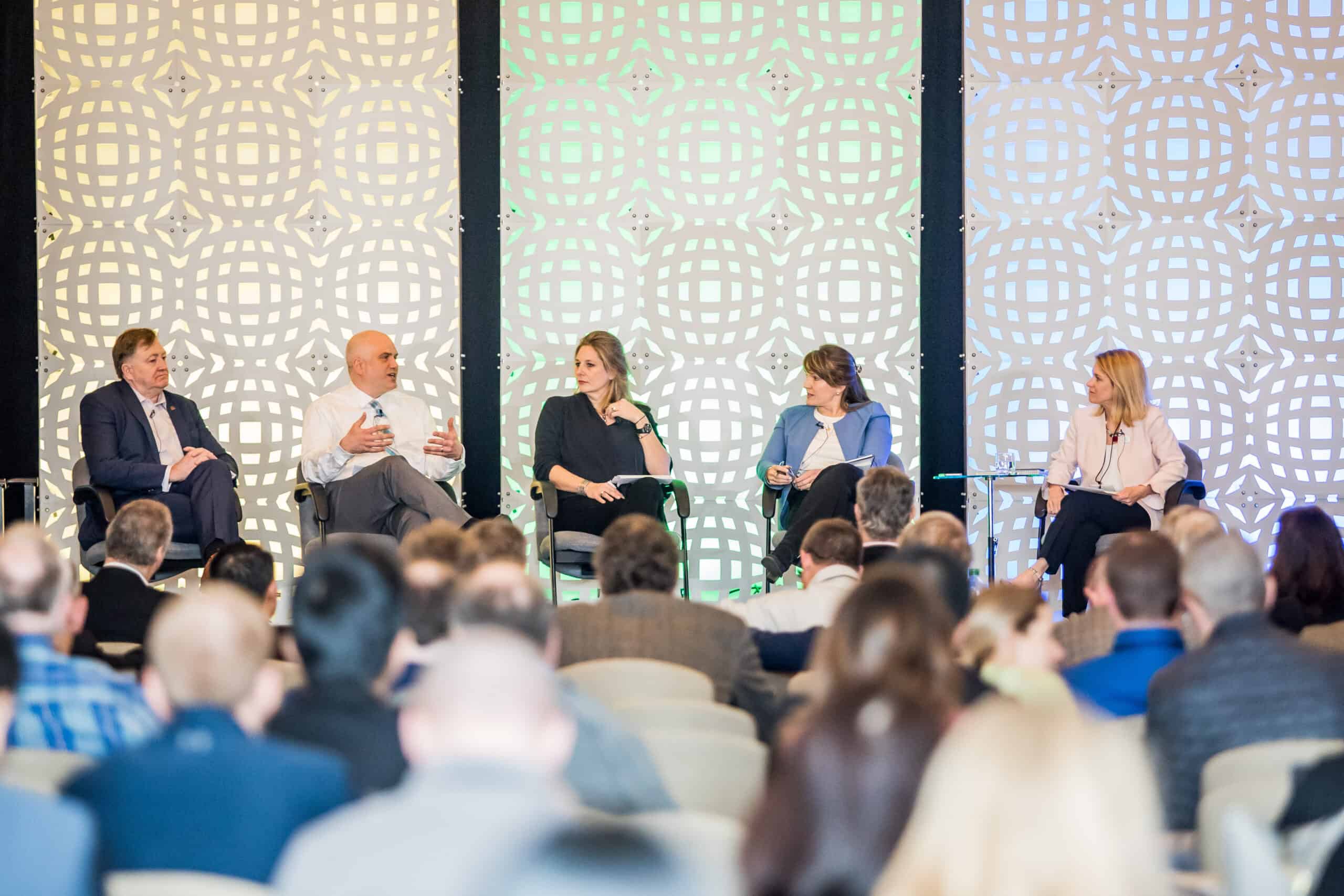
By Tina Halfpenny, Executive Director and CEO, DesignLights Consortium
It’s a new year—a great time to reflect on how much we accomplished, what we have learned, what we may have missed, and then set our sights on new projects and innovations. We are in an all hands on deck moment to support the COP 28 climate pledge to double energy efficiency by 2030. But first, we are taking stock of where we are and how far we have come over the past decade of work to recognize the change, impact, and domino effects that the DesignLights Consortium has influenced.
Who we are
The DLC is a consortium of energy efficiency program administrators, implementers, policy makers, lighting industry experts, and manufacturers. We are an independent, nonprofit working as a collaborator, facilitator and liaison in the energy efficiency industry by seeking thought leadership, input, and feedback from industry stakeholders and members. Our small team has convened thousands of people and worked with different agendas to find common ground and productive solutions. I’m very proud of what the DLC has been able to achieve over the past decade. Here is some of what we have accomplished and where we’re looking to go next.
Saving 1,000 TWh over a Decade
The market transformation of LEDs has had a massive impact on energy efficiency over the last decade. Based on U.S. Department of Energy data and our team’s analysis, commercial and industrial buildings in the U.S. and Canada, saved approximately 1,000 TWh of energy from 2010 to 2022 thanks to the LED revolution and our collective ability to accelerate the transition to LED lighting technology. The CO2 emissions are equivalent to approximately 1,700 gas power plants running for one year. In addition, this movement is significantly avoiding mercury pollution from fluorescent lighting in our waste streams. We applaud our members, their implementors, and the energy regulators for the ongoing learning and collaboration, and the lighting industry for the capability and capacity to rapidly transform commercial lighting to LED technology. This enormous accomplishment is the work of aligning policies, standards, goals, incentive mechanisms, and sheer hard work to transform our lighting and reduce a major energy load for the commercial and industrial buildings sector.
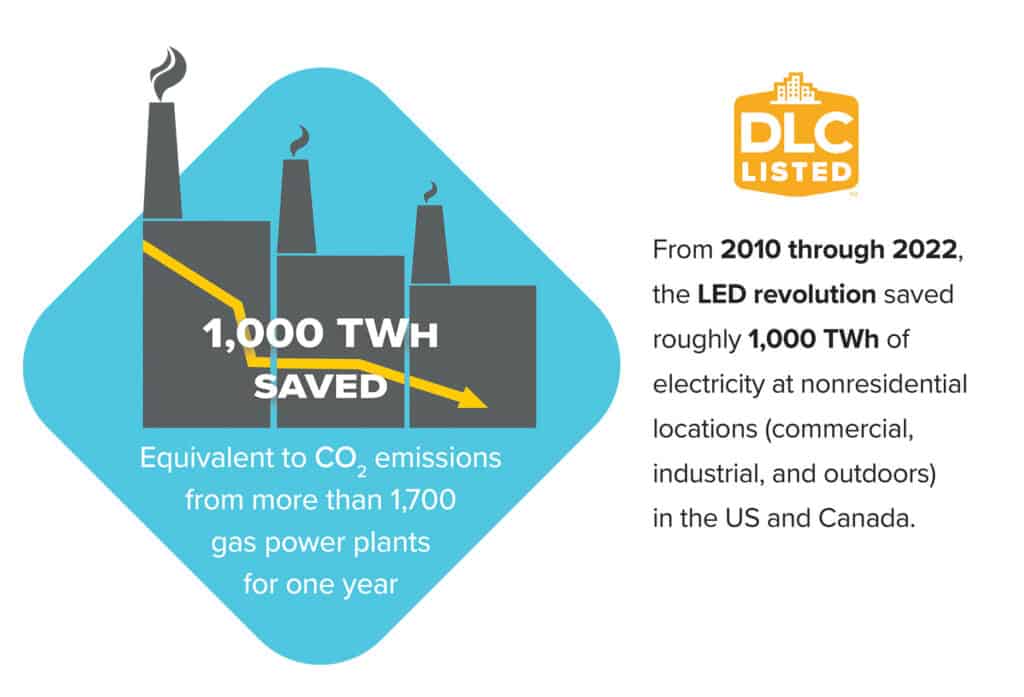
Increasing Efficacy by 30-40%
In the beginning of the DLC, we developed our requirements to focus on efficacy (the amount of useful light output per unit of electricity) with regular increases that aligned with the pace of technology, in order to help our members validate energy savings with quality lighting choices. Over the past decade, we’ve increased efficacy in LED luminaires and lamps by 30-40% depending on the type of luminaire. This means that the lighting is giving more output for less electricity, and the higher efficacy value signifies greater energy efficiency and more light output for the power consumed so that commercial and industrial customers can save energy and money.
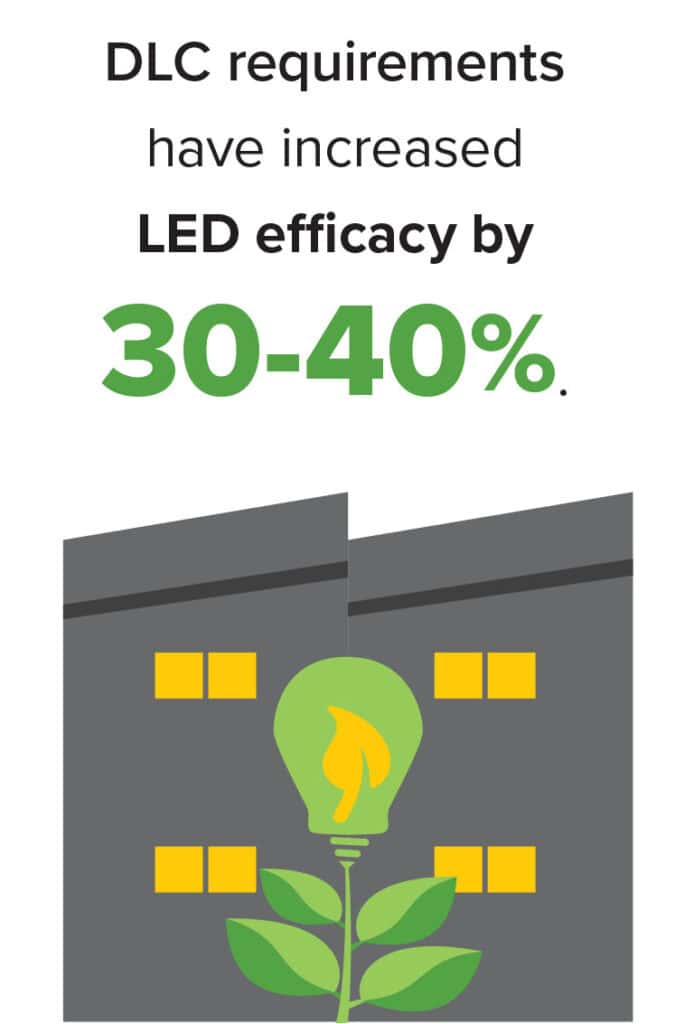
DOE invested in the technology and research, agencies like PNNL delivered state-of-the-art science, while standards bodies such as the IES and NEMA have delivered performance, safety, illumination levels, and testing standards that further enabled our collaboration with over 2,500 manufacturers and other stakeholders over the years. We are grateful for our utility members for working to align their goals to establish a framework (the Qualified Products List – QPL) that could be adopted by 75% of energy efficiency programs in North America.
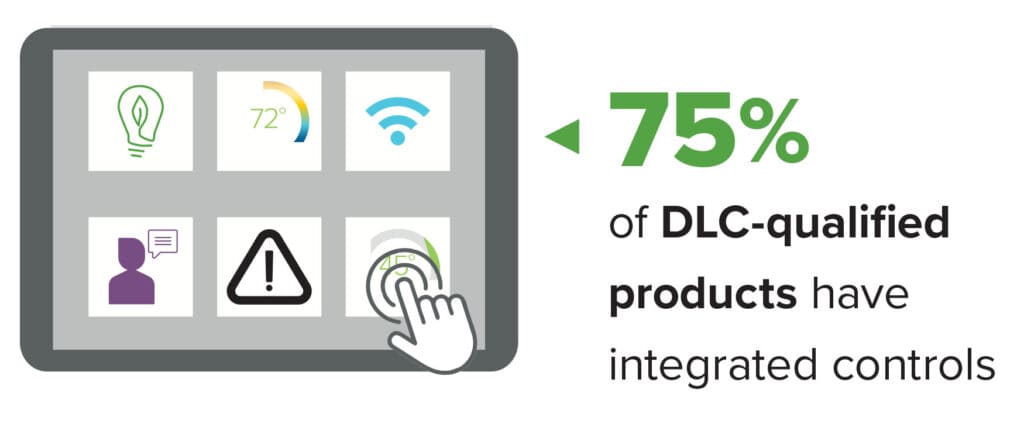
QPL Quality and Quantity
First established in 2010, the DLC’s QPLs are always shifting toward higher quality and efficiency. Over the last decade we have qualified over a million products, but thanks to advances in lighting, we’ve narrowed that to over 300,000 products on the list today, that not only meet our efficacy requirements, but also quality and control requirements. The Solid-State Lighting (SSL) QPL is our largest resource for energy efficiency programs. We are proud that 75% of the qualified products now have integrated controls and 99.5% of qualified products are dimmable, increasing their ability to save energy. In the horticulture world, DLC-qualified LED lighting fixtures are over 35% more efficacious than incumbent, non-LED fixtures. Hort Technical Requirements V3.0 which began last March featured the program’s first efficacy bump, increasing potential energy savings with DLC-qualified products by at least 20%.
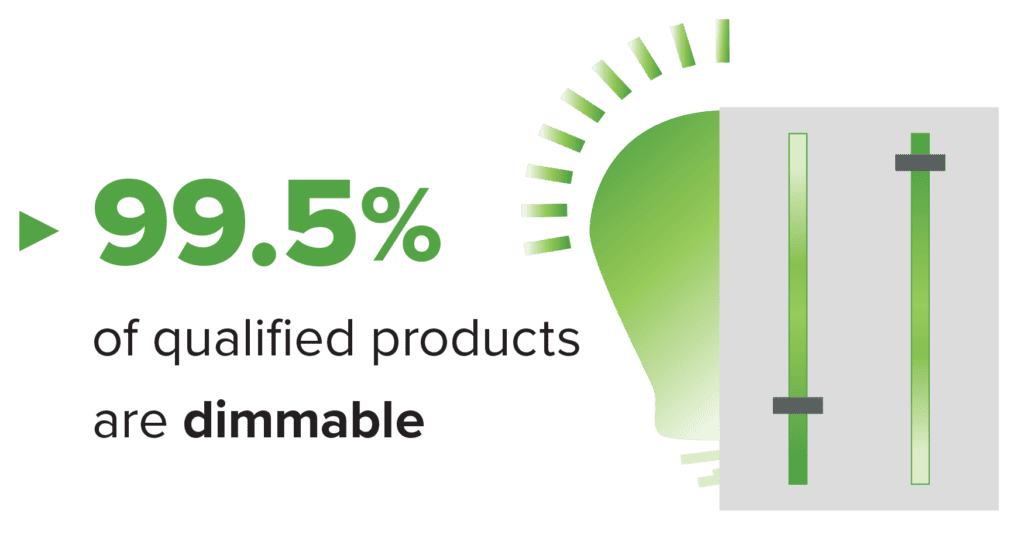
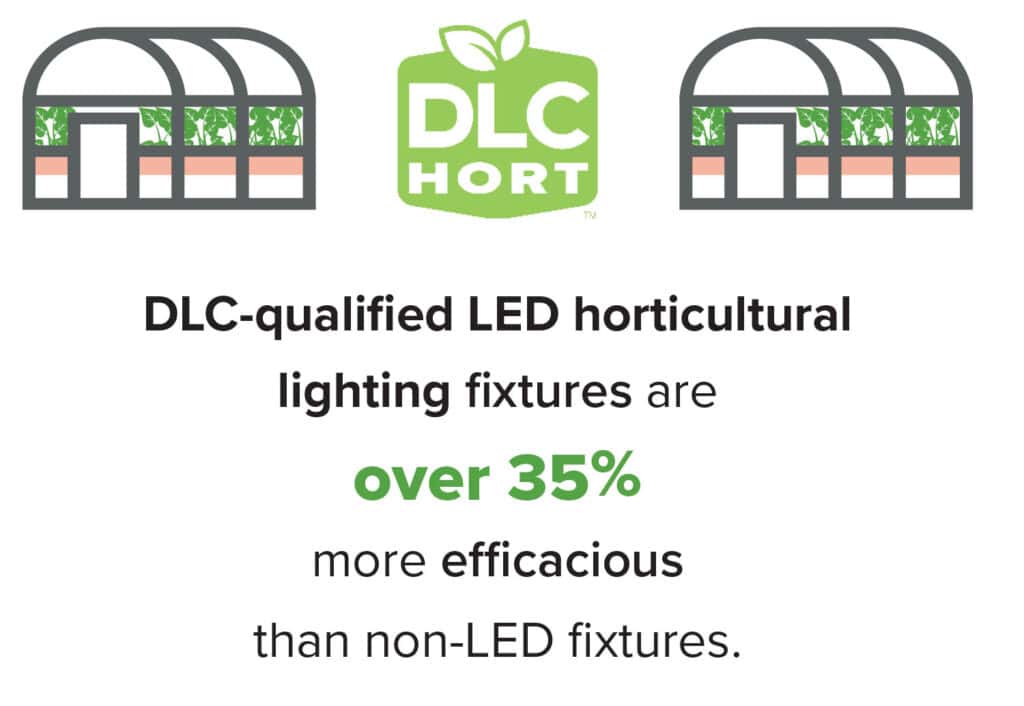
Awareness, Education, and Collaboration
Our QPLs have had a great impact on commercial and industrial energy efficiency programs, but we also seek to educate policy makers and building owners/operators on the massive potential of networked lighting controls, the possibilities for more efficient horticulture lighting, and effective ways to mitigate light pollution. We do this by conducting or commissioning independent, unbiased research like our August 2023 Economic Potential of Networked Lighting Controls in Commercial Buildings (summary available here) and creating tools like our light pollution ordinances map, which tracks local outdoor ordinances and bylaws across North America.
It’s through the work of our industry advisory group, technical working groups, committees, and subject matter advisory groups that work towards better strategies, resources, and solutions to tackle the challenges of energy and climate. If you’re interested in being a part of these discussions we welcome you to reach out at info@designlights.org to join us.
Dark Skies and Protecting Ecosystems
We have been adding more and more products to our LUNA QPL, continuing to double down on light pollution mitigation to support ecosystems and human communities while still saving energy. In Hawaii, I have seen firsthand what bright coastal lights can do to critical sea bird and sea turtle populations. The ecosystem-level harm is preventable with more education and quality alternatives for outdoor lighting. This year we’re working toward a standard and requirements for amber outdoor lights for the most sensitive environments. There are nearly 300 lighting ordinances in the US alone and growing interest in making better choices regarding light pollution and keeping our skies dark for human health and wellness, views of the night sky, and protection of our natural ecosystems. We look forward to sharing our research and making it easier than ever to choose light pollution mitigating products from our QPL.
Future Vision and Mission
The DLC is launching from this incredible platform to create and collaborate on solutions to reduce energy, carbon and light pollution. We’ve updated our mission and vision statements to expand our focus beyond lighting quality and our goals beyond saving energy. As a consortium, we are working together to encompass the reduction of light pollution and carbon emissions, as well as transforming indoor agriculture to be more efficient.
Moving forward, the QPLs will evolve to be more user-friendly and useful to broader audiences. We want our resources to help anyone who is looking to save energy, reduce carbon, or mitigate light pollution. The QPLs are available to all – simply create a MyDLC account to access them.
At the DLC, we’re moving full speed ahead to keep scaling our impact and gather more voices and ideas in the energy community. It’s the passion of our team and the power of working together that can achieve greater strides towards decarbonization for all people and the environment.
We always welcome feedback – please share your thoughts via social media or by emailing info@designlights.org.
© 2023 DesignLights Consortium. The DesignLights Consortium is a project of Efficiency Forward, Inc., a non-profit 501(c)3 organization. Privacy Policy Terms of Use
